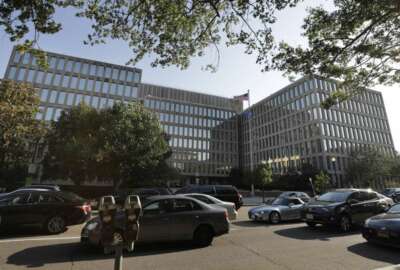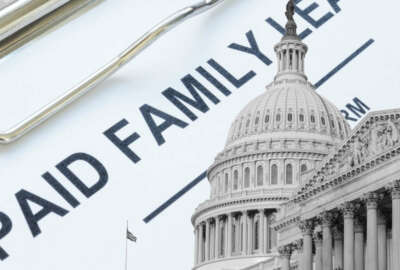
Questions about the new paid parental leave law? You’re not alone
The Office of Personnel Management is currently drafting regulations needed to implement the Federal Employee Paid Leave Act. Members of the public will have a...
The Office of Personnel Management is currently drafting the regulations needed to implement the new paid parental leave law, which the agency said it must complete before it can tackle employee questions and concerns.
“OPM is not able to answer specific questions regarding this new leave benefit without going through the Administrative Procedures Act (APA) regulatory process,” agency spokesman Anthony Marucci said in a statement. “OPM plans to issue proposed regulations by late spring that will provide the opportunity for the public to submit their comments.”
OPM will issue final regulations after the public comment period ends, Marucci said. Guidance will also go out to agency heads and human resources specialists, which will detail how they should put the new paid parental leave law into practice, OPM said back in December.
Federal News Network has received more than a dozen questions and comments from readers about the new paid parental leave law.
The Federal Employee Paid Leave Act, which President Donald Trump signed into law in mid-December, grants employees up to 12 weeks of paid time off for the birth, adoption or foster of a new child. The law applies to leave taken in connection with a birth or placement of a child occurring on or after Oct. 1.
Most have expressed frustration with the Oct. 1 implementation date, questioning why the new benefit will take 10 months to put in place. Others have argued the law isn’t fair to federal employees who are expecting a new child right before the benefit kicks in this fall.
Beyond the formal solicitation of public comments, OPM must stand up an entirely new category of leave, which will require coordination with agency human resources offices, payroll providers and employees themselves.
For reference, it took the administration nearly three months — longer in some cases — to implement the 2019 retroactive pay raise for federal employees. That process required manual changes to base and locality pay for some agencies.
Final regulations implementing phased retirement, a new program that President Barack Obama had signed into law back in 2012, weren’t released until 2014.
The stand-up of the Pathways Program also lagged on for at least two years.
In addition, new withdrawal changes to the Thrift Savings Plan took a little less than a year to implement.
Meanwhile, the news that some factions of the federal workforce were inadvertently left out of the original paid parental leave law have left employees feeling anxious.
Some Federal News Network readers have said they’re asking their agency’s human resources shop to double check whether they will, in fact, be covered under the paid parental leave law.
Senate Minority Leader Chuck Schumer (D-N.Y.) and seven other Democratic colleagues have introduced the Federal Employee Parental Leave Technical Correction Act. The bill would make the corrections needed to ensure much of the Federal Aviation Administration, a portion of the Transportation Security Administration workforce, non-judicial employees of the District of Columbia courts, the District of Columbia Public Defender Service, presidential employees and Article 1 judges have access to paid parental leave benefits.
The National Federation of Federal Employees acknowledged there was still some confusion over what categories of federal employees may have been left out of the existing paid parental leave law. But only its FAA members aren’t covered, NFFE said.
The National Treasury Employees Union told Federal News Network all of the 150,000 employees it represents are covered by the paid parental leave law.
This includes federal employees at the IRS and other Treasury Department components, the Environmental Protection Agency, Nuclear Regulatory Commission, Customs and Border Protection and Federal Law Enforcement Training Centers, Energy Department and the Food and Drug Administration and other organizations within the Department of Health and Human Services.
NTEU members at the the Securities and Exchange Commission, Federal Deposit Insurance Corporation and Consumer Financial Protection Bureau are also covered, the union said.
“We succeeded in negotiating programs at the FDIC and the SEC providing for six weeks of paid parental leave,” NTEU National President Tony Reardon said in a statement. “Those programs remain in place until the new 12-week program takes effect in October of this year. At that point the larger governmentwide program kicks in, although NTEU retains the option of negotiating over any differences that may exist between the two programs.”
NTEU negotiated new contracts with FDIC and SEC this past fall.
The American Federation of Government Employees said only non-screener personnel at TSA were left out of the paid parental leave law. Schumer’s technical corrections bill, however, would correct the oversight.
The more than 600,000 employees at the U.S. Postal Service are also not covered by the paid parental leave law, though their exclusion appears intentional. Postal unions can bargain over their employees’ pay and benefits, including leave.
Copyright © 2025 Federal News Network. All rights reserved. This website is not intended for users located within the European Economic Area.
Nicole Ogrysko is a reporter for Federal News Network focusing on the federal workforce and federal pay and benefits.
Follow @nogryskoWFED
Related Stories





